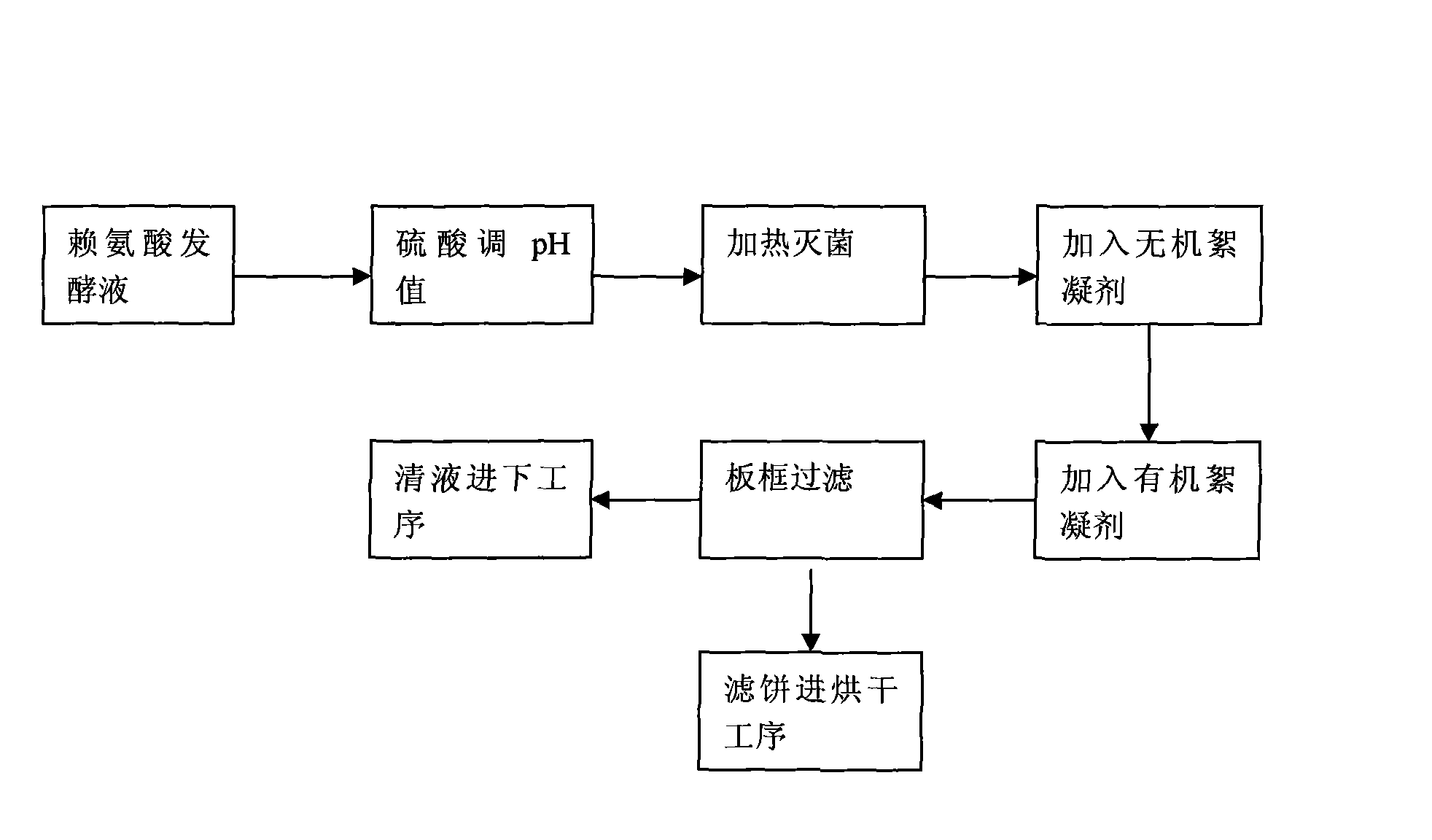Separation method of lysine bacteria
A separation method, lysine technology, applied to the separation of microorganisms, etc., can solve the problems of large equipment investment and high process energy consumption, and achieve the effect of high equipment investment, low equipment investment and low price
- Summary
- Abstract
- Description
- Claims
- Application Information
AI Technical Summary
Problems solved by technology
Method used
Image
Examples
Embodiment 1
[0022] 1. Materials and equipment:
[0023] Equipment and material name
model
quantity
Remark
Flow 100L
1 set
Inorganic flocculant
500g
organic flocculant
Anionic
500g
Molecular weight 10 million polypropylene
Amide resin
Lysine Fermentation Broth
-----
250L
Workshop offers concentration 15%
concentrated sulfuric acid
industrial grade
5kg
Workshop offers
Plate and frame filter press
---
1 set
Filtration area 0.25 square meters
[0024] 2. Specific methods and results:
[0025] 2.1 Put 250L of fermentation broth into the reaction tank, adjust the pH value to 3.7 with concentrated sulfuric acid, heat and sterilize, the sterilization condition is 70°C and keep it warm for 1.5 hours;
[0026] 2.2 Prepare the inorganic flocculant with water to make a solution with a concentration o...
Embodiment 2
[0035] 1. Materials and equipment:
[0036] Equipment and material name
model
quantity
Remark
Flow 100L
1 set
Inorganic flocculant
PAC
500g
organic flocculant
Anionic
500g
Polyacrylamide with a molecular weight of 5 million
Amine resin
Lysine Fermentation Broth
-----
250L
Workshop offers
Concentration 14.1%
concentrated sulfuric acid
industrial grade
4kg
workshop offers
Plate and frame filter press
---
one
Filtration area 0.25 square meters
[0037] 2. Specific methods and results:
[0038] 2.1 Put 250L of fermentation broth into the reaction tank, adjust the pH value to 4.8 with concentrated sulfuric acid, heat and sterilize, the sterilization condition is 65°C and keep it warm for 2.5 hours;
[0039] 2.2 Prepare the inorganic flocculant with water to make a solution with a concentr...
Embodiment 3
[0048] 1. Materials and equipment:
[0049] Equipment and material name
model
quantity
Remark
Flow 100L
1 set
Inorganic flocculant
PAC
500g
organic flocculant
Anionic
500g
Molecular weight 15 million polypropylene
Amide resin
Lysine Fermentation Broth
-----
250L
Workshop offers
Concentration 13.5%
concentrated sulfuric acid
industrial grade
Workshop offers
Plate and frame filter press
---
1 set
Filtration area 0.25 square meters
[0050] 2. Specific methods and results:
[0051] 2.1 Put 250L of fermentation broth into the reaction tank, adjust the pH value to 5.6 with concentrated sulfuric acid, heat and sterilize, the sterilization condition is 70°C and keep it warm for 2 hours;
[0052] 2.2 Prepare the inorganic flocculant with water to make a solution with a concentration of 2%; ...
PUM
 Login to View More
Login to View More Abstract
Description
Claims
Application Information
 Login to View More
Login to View More - R&D
- Intellectual Property
- Life Sciences
- Materials
- Tech Scout
- Unparalleled Data Quality
- Higher Quality Content
- 60% Fewer Hallucinations
Browse by: Latest US Patents, China's latest patents, Technical Efficacy Thesaurus, Application Domain, Technology Topic, Popular Technical Reports.
© 2025 PatSnap. All rights reserved.Legal|Privacy policy|Modern Slavery Act Transparency Statement|Sitemap|About US| Contact US: help@patsnap.com

